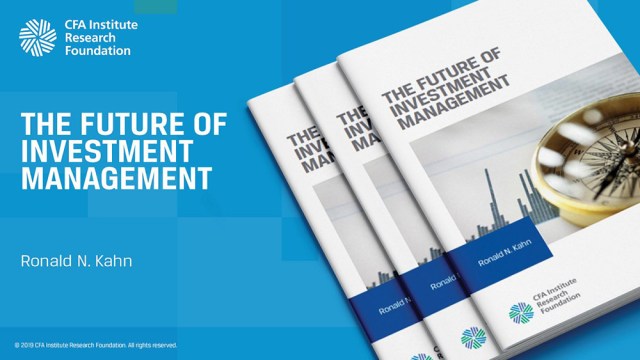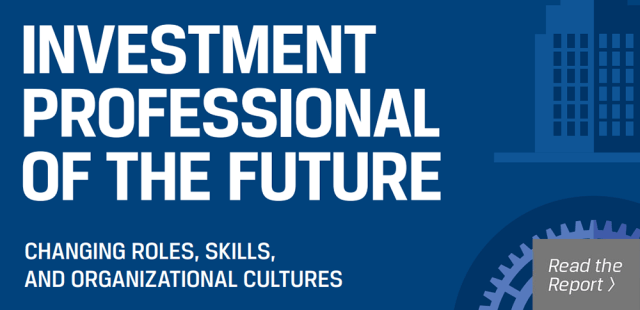[ad_1]
Technology has been integrated into traditional wealth management practices in recent years in unexpected ways. The relationships that blossomed between tech-first companies and financial advising’s old guard have produced new partnerships and created new opportunities for the wealth management sector.
Now that technology has a strong foothold in the space, the industry must look to the future and the next iteration of client relationships to make them even more personalized.
While wealth managers have offered their wealthiest clients tailored, individualized options for some time, today embracing and expanding that approach has never been more important.
Indeed, personal attention was second only to pricing when clients ranked where they see the value in wealth management relationships, according to EY’s Global Wealth Management Research Report for 2019. Clients also indicated a preference for simple, personalized, and connected solutions over particular products and services.
This demand for the personal and the customized will be a key theme for wealth management in 2020.
2020 Means 20/20 Vision
The evolution of robo-advice and the parallel adaptation of traditional wealth management demonstrate the value-add that the human-technology combination provides financial advisory businesses.
The best wealth management today ensures that clients who want more human interaction based on the complexity of their wealth planning and their personal preferences can get it, while those inclined toward convenience and tech platforms they can pilot themselves can have that too.
The value that wealth managers deliver clients is in our ability to recognize that one size does not fit all.
In 2020, financial advisers should apply tech tools to meet our clients’ basic needs, automating where we can. The bandwidth that we save we can then apply to personalization, relationship building, and doing more for more clients. Automation means we have more time for the human-to-human connection, while the internet and social media give us more ways to attract potential clients and sync up with current ones.
We can’t afford to be myopic. We need to forgo the stereotypes about tech-savvy young investors opting for robo-advice and technophobic older clients avoiding it. If we want to attract and keep clients, we need to begin with the premise that each is unique and each requires a unique, customized relationship. We have to listen to what the client wants and build a relationship and a portfolio that reflects what they tell us.
One size fits one, not all.
The recent evolution of the sector shows that we need to expand our definition of wealth management. We cannot restrict our offerings only to those with a certain amount of wealth. We can’t be an industry that serves high-net-worth individuals only. While the skyrocketing growth of robo advice shows our potential, it also hints at the peril if we don’t adapt.
In late 2018, Charles Schwab reported that about 60% of US consumers expect to use a robo-advisor by 2025. CB Insights found that 60% of robo-advisor users are millennials, the generation that is expected to control $20 trillion of assets by 2030, and another $30 trillion by 2050 in North America alone.
Wealthfront reached $20 billion in assets under management (AUM) late last year, while Betterment reported more than $16 billion in AUM in 2019. These companies are targeting young people and offering them affordable and comprehensive money management.
We need to do the same.
Wealth managers today have the ability to create a “family office for all,” to democratize financial advice, and serve clients of all backgrounds, ages, and wealth.
This is the future of wealth management.
Robo-advisors are tapping the clients of tomorrow today. And to compete, wealth managers must also take that personalized approach. It’s not that technology is the clear answer. Robo-advisors are not succeeding because of technology alone. They are succeeding because they are giving clients what they want. We human wealth managers must as well.
That no two clients are the same may sound like a cliché. But too often we lump clients together and make broad assumptions about their wants and needs.
As we look with clarity into 2020, wealth managers would do well to see ourselves as holistic providers of advice and money management for everyone.
And our success will be determined by how well we can deliver a customized experience that reflects each client’s personalized needs.
If you liked this post, don’t forget to subscribe to the Enterprising Investor.
All posts are the opinion of the author. As such, they should not be construed as investment advice, nor do the opinions expressed necessarily reflect the views of CFA Institute or the author’s employer.
Image credit: ©Getty Images/Suwannar Kawila/EyeEm
Professional Learning for CFA Institute Members
Select articles are eligible for professional learning (PL) credit. Record credits easily using the CFA Institute Members App, available on iOS and Android.
[ad_2]
Image and article originally from blogs.cfainstitute.org. Read the original article here.



